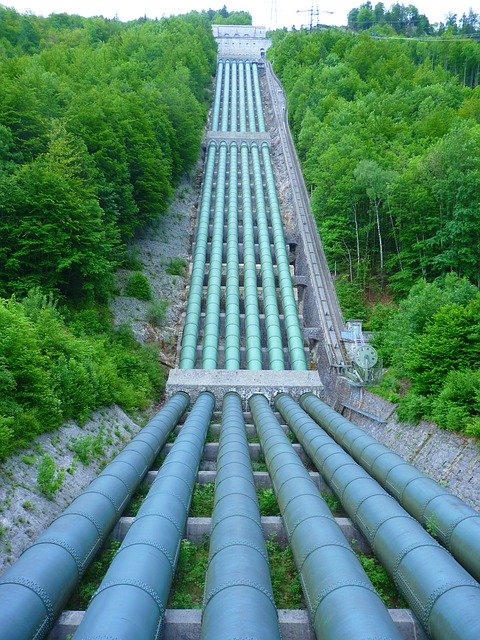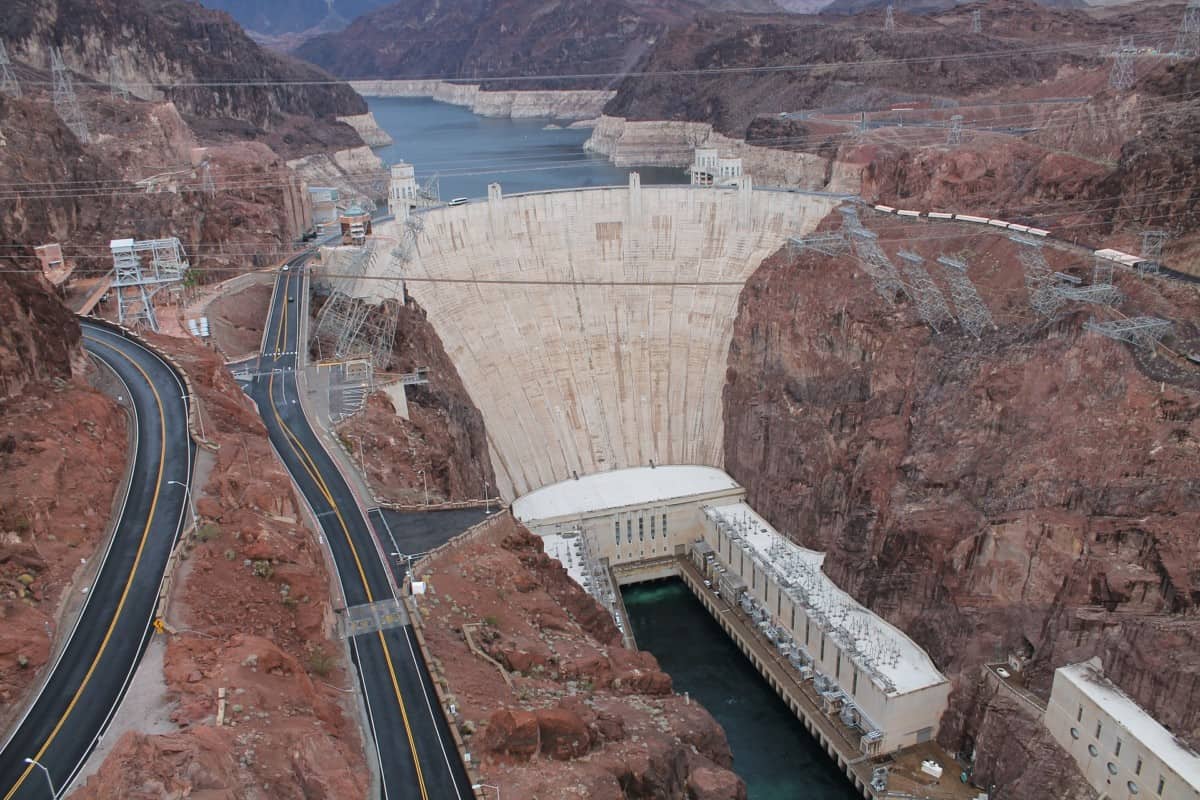About 71% of the earth’s surface is covered with water, and it never sits still. Some of this water can be used to generate energy, to be precise hydroelectricity.
INTERESTING FACTS ABOUT HYDROELECTRIC ENERGY
Hydroelectricity is electricity produced from hydropower. Hydropower is a renewable energy source that generates electricity from generators driven by turbines that convert energy from fast-flowing water into mechanical energy.
The primary components of a hydroelectric plant are a river, dam, turbine, generator, and power cables. Its power plants are located in dams where rivers drain, raising the water level behind the dam and creating a raised head for the water to fall.
The water is stored at a higher elevation, released to flow downward through large pipes to a lower altitude where turbines are installed. Here, the fast-flowing water rotates turbines that drive generators.
The generators convert the mechanical energy of the turbines to electricity. Via power cables, electricity is channelled to transformers for conversion to voltages suitable for long-distance transmission.
The rate at which the falling water generates the energy is directly proportional to the working head. A higher head produces more power with a small volume of water, whereas a lower head needs more water to generate the same amount of energy.
Around the globe, about 20% of all the electricity is generated by hydropower. This type of energy is self-sustaining, and its use in most parts of the world is growing tremendously. It is the most commonly used renewable source of energy.
Solar energy, wind energy, geothermal energy, biomass energy, and tidal energy all come after hydro power. They account for less than 3% of renewable energy production.Compared to other energy sources, hydropower is cost-effective. Countries and states using this energy have lower bills than those that do not have it.
Hydropower is one of the oldest sources of power on the planet-the use of moving water to generate energy dates back to 2,000 years ago. Water wheels were used in Europe during the middle ages of 500 to 1500.
They were used to run mills for grinding flour, making paper by hammering flax leaves, crushing rocks for road making, and moving bellows in the iron smelting process.
Greeks used water wheels at that time to grind flour. China also used water wheels during the Han Dynasty between 202 BC and 9 AD. France was responsible for creating one of the first hydropower turbines in the mid-1700s.
More interesting facts about hydroelectric energy
The world’s first hydroelectric project was in England and powered a single lamp in the Cragside country house in Northumberland. This happened in 1878, and four years later, the first plant was opened in Wisconsin, United States of America (USA), and it uses the Fox River.
By 1881, hydropower plants had been set in; Grand Rapids, located in Michigan and Niagara Falls in New York. Niagara Falls has since then evolved to be among one of the primary hydroelectric plants in the USA.
The world’s biggest and powerful hydroelectric plant is the Three-Gorges Dam, 1.4 miles wide, and 600 feet high, located in China. The project has slowed down the earth’s rotation by 0.06 microseconds.
It is built on the Yangtze River in the Hubei Province, and its final 32 generators are in operation. The hydropower plant is capable of generating 22,500MW.
A second place to Three Gorges Dam is the Itaipu Dam in Brazil, which can generate a capacity of 14, 000 MW. Despite the difference in size, in a year, the two power plants produce almost equal electricity. The seasonal variance inflow of the rivers feeding the two dams accounts for this as Parana River has lower variance.
The reliance of a country on hydropower is dependent on many factors. In Norway, 99% of the energy needs are catered for by hydropower. The country has achieved the EU’s Renewable Energy Directive with a gross consumption of 67.5% renewable sources by 2020. New Zealand, on the other hand, uses 75% of its energy demand from hydropower.
The USA’s 98% of renewable energy is obtained from hydropower. In 2015, the countries 7% of energy requirements came from energy harnessed from flowing water.
Hydroelectricity works very fast in cases of blackouts hence quite useful during emergencies. The hydropower plants can promptly send electricity to the grids. Thus, backup power can easily be provided from these generators to industries, hospitals, schools, and other large organizations.
Hydropower turbines convert approximately 90% of its energy into electricity. Compared to fossil fuel plants, which convert only about 50% of the power to electricity, it is conclusive, that hydropower is efficient.
Data has proved that in Wisconsin hydropower is produced for less than a cent per kWh, which is cheaper than nuclear and fossil fuel.
Moreover, hydropower renewable source of energy is environmentally friendly as it does not produce greenhouse gases. Globally, the energy sector is the highest source of greenhouse gas emissions. This poses life on earth at higher risk, a consequence of global warming.
If coal-fired generators replaced it, there would be increased greenhouse gases in the environment. Switching from fossil fuels to hydropower helps avoid air pollution.
If you are enjoying these facts about hydroelectric energy you can find more information in my article Why Do We Need Alternative Energy found on this website.
There exists a type of hydropower called pumped storage. As the name suggests, it works like a battery to store electricity generated by other power sources like nuclear, solar, and wind.

The storage is in the form of potential energy as it pumps water to a higher level reservoir from a lower one using the power. When needed, the water is released from a high level, turns the turbine and generates the electricity.
Averagely, the production of electricity from hydropower sources can support the needs of up to 28.3 million people. In 2019, global hydropower supply capacity reached 1,308 Gigawatts, as around fifty countries completed their upgrade projects.
Final facts about hydroelectric energy, The world’s largest hydro energy-producing countries from the 2017 statistics are; China with a capacity of 341.1GW, the USA with 102GW, Brazil with 100GW, Canada produced 81.4GW, and Russia stood at 51.1GW.
Recent Posts
Understanding Energy and Electricity: The Power For Progress
Energy and Electricity Energy and electricity are integral components of modern life, powering everything from homes and businesses to transportation and communication. Without them, the...
The Future of Wind Energy The future of wind energy is set to play a critical role in addressing global energy needs while combating climate change. As renewable energy sources like wind and...


